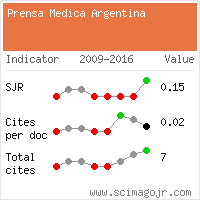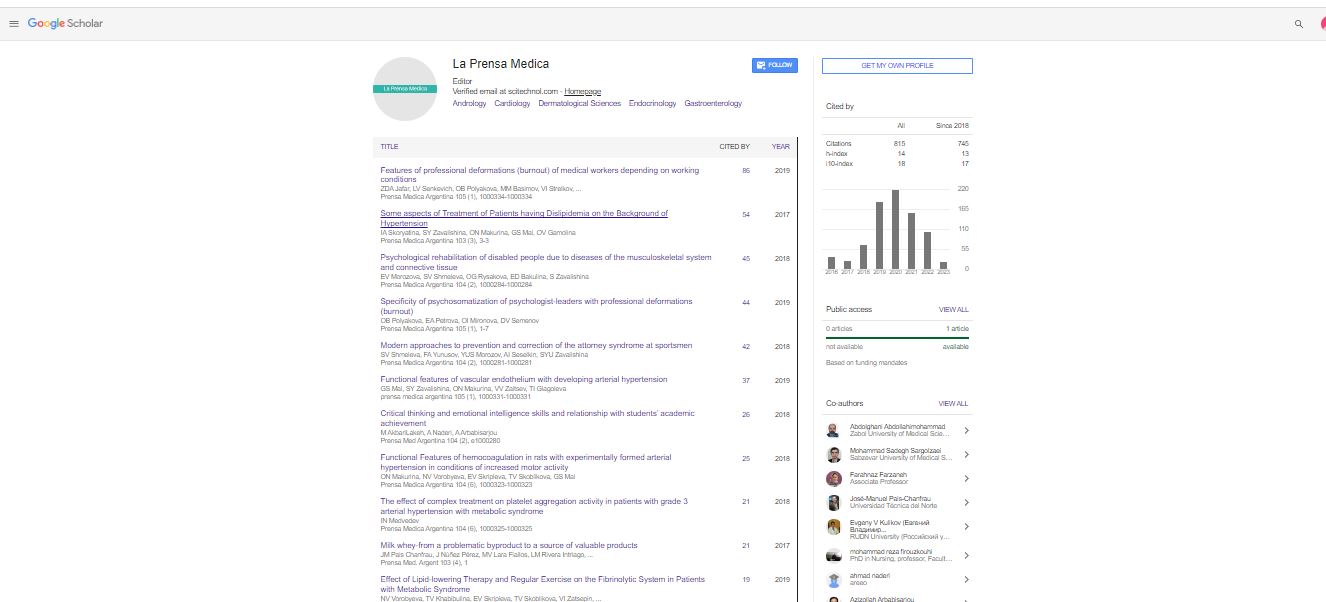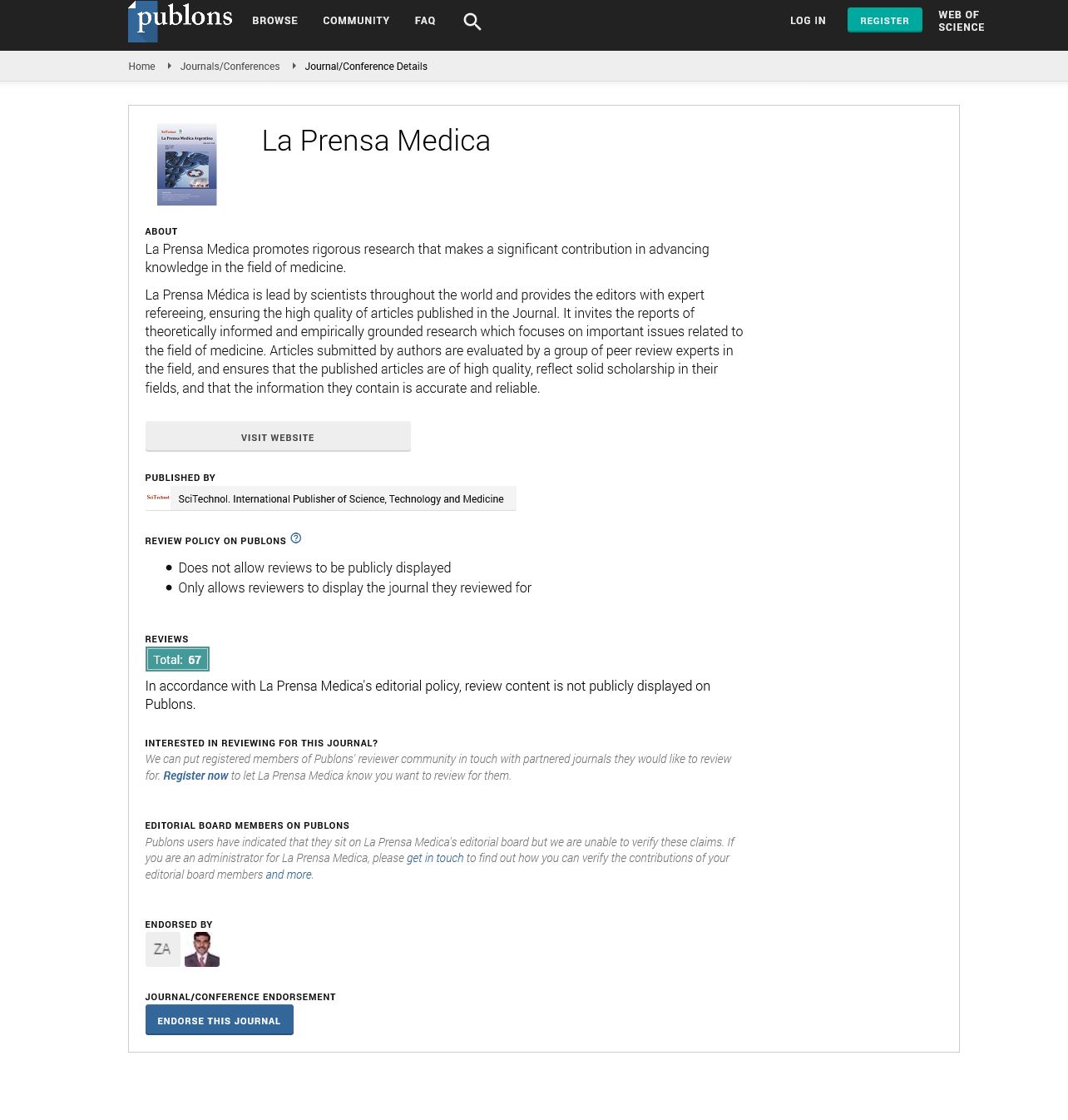Commentary, Prensa Med Vol: 0 Issue: 0
Epigenetics and Populace Hereditary Qualities
Deepika Singh*
Department of Pharmaceutical Sciences, Faculty of Health Sciences, Sam Higginbottom University of Agriculture, Technology & Sciences, Allahabad 211007, Uttar Pradesh, India.
*Corresponding author: Deepika Singh, Department of Pharmaceutical Sciences, Faculty of Health Sciences, Sam Higginbottom University of Agriculture, Technology & Sciences, Allahabad 211007, Uttar Pradesh, India E-Mail: deepi.chhoti@gmail.com
Received date: August 05, 2021; Accepted date: August 19, 2021; Published date: August 26, 2021
Abstract
Hereditary qualities is a part of science worried about the investigation of qualities, hereditary variety, and heredity in living beings. However heredity had been noticed for centuries, Gregor Mendel, Moravian researcher and Augustinian monk working in the nineteenth century in Brno, was quick to contemplate hereditary qualities logically. Mendel considered "quality legacy", designs in the manner in which characteristics are given over from guardians to posterity over the long run. He saw that organic entities (pea plants) acquire attributes via discrete "units of legacy".
Keywords: hereditary qualities
Introduction
Hereditary qualities is a part of science worried about the investigation of qualities, hereditary variety, and heredity in living beings. However heredity had been noticed for centuries, Gregor Mendel, Moravian researcher and Augustinian monk working in the nineteenth century in Brno, was quick to contemplate hereditary qualities logically. Mendel considered "quality legacy", designs in the manner in which characteristics are given over from guardians to posterity over the long run. He saw that organic entities (pea plants) acquire attributes via discrete "units of legacy". This term, actually utilized today, is a fairly questionable meaning of what is alluded to as a quality. Characteristic legacy and atomic legacy instruments of qualities are as yet essential standards of hereditary qualities in the 21st century, however present day hereditary qualities has extended past legacy to examining the capacity and conduct of qualities. Quality design and capacity, variety, and appropriation are concentrated inside the setting of the cell, the creature (for example strength), and inside the setting of a populace. Hereditary qualities has brought about various subfields, including sub-atomic hereditary qualities, epigenetics and populace hereditary qualities. Creatures concentrated inside the expansive field range the spaces of life (archaea, microscopic organisms, and eukarya). Hereditary cycles work in blend with a creature's current circumstance and encounters to impact improvement and conduct, frequently alluded to as nature versus sustain. The intracellular or extracellular climate of a living cell or creature might turn quality record on or off. An exemplary model is two seeds of hereditarily indistinguishable corn, one put in a mild environment and one in a dry environment (lacking adequate cascade or downpour). While the normal tallness of the two corn stalks might not really set in stone to be equivalent, the one in the dry environment just develops to a large portion of the stature of the one in the calm environment because of absence of water and supplements in its current circumstance. Organic entities have a large number of qualities, and in physically recreating life forms these qualities for the most part group freely of one another. This implies that the legacy of an allele for yellow or green pea tone is irrelevant to the legacy of alleles for white or purple blossoms. This wonder, known as "Mendel's subsequent law" or the "law of autonomous variety," implies that the alleles of various qualities get rearranged between guardians to frame posterity with a wide range of blends. (A few qualities don't arrange freely, exhibiting hereditary linkage, a subject examined later in this article. Frequently various qualities can cooperate such that impacts a similar attribute. In the Blue-looked at Mary (Omphalodes verna), for instance, there exists a quality with alleles that decide the shade of blossoms: blue or red. Another quality, in any case, controls whether the blossoms have shading at all or are white. At the point when a plant has two duplicates of this white allele, its blossoms are white— whether or not the principal quality has blue or maroon alleles. This cooperation between qualities is called epistasis, with the second quality epistatic to the first. Numerous attributes are not discrete elements (for example purple or white blossoms) yet are rather nonstop components (for example human stature and skin tone). These perplexing qualities are results of numerous genes.The impact of these qualities is intervened, to shifting degrees, by the climate a life form has encountered. How much a living being's qualities add to an intricate characteristic is called heritability. Estimation of the heritability of a characteristic is relative—in a more factor climate, the climate impacts the complete variety of the attribute. For instance, human stature is a characteristic with complex causes. It has a heritability of 89% in the United States. In Nigeria, nonetheless, where individuals experience a more factor admittance to great sustenance and medical care, stature has a heritability.
 Spanish
Spanish  Chinese
Chinese  Russian
Russian  German
German  French
French  Japanese
Japanese  Portuguese
Portuguese  Hindi
Hindi 

